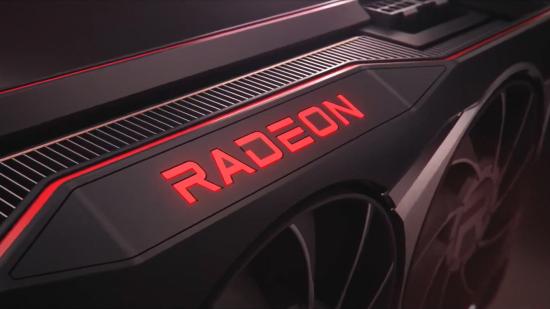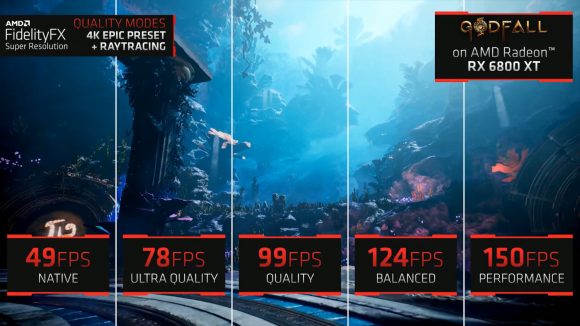While Nvidia is doubling down on its Deep Learning Super Sampling (DLSS) tech by announcing that the feature is headed for Doom Eternal, Rainbow Six Siege, and Red Dead Redemption 2, AMD’s answer is just around the corner. The company took to Computex to unveil that FidelityFX Super Resolution (FSR) will debut on June 22, and it’ll come with four presets.
Currently, DLSS is what makes the RTX 3080 the best graphics card money can buy, provided you can navigate the ongoing stock issues. It renders the on-screen image at a lower resolution before using machine learning and AI to upscale it to what’s known as the ‘ground truth’ image. This reduces the overhead and makes ray tracing and 4K resolution a lot more accessible, and even helps you boost fps on the best gaming laptop where performance might bottleneck.
Nvidia’s solution uses physical tensor cores that are exclusive to RTX GPUs. Conversely, FSR is open source and doesn’t require specific hardware, opening it up beyond the Radeon RX 6000 series to include previous generations as far back as the RX Vega lineup.
It’ll even support older Nvidia GPUs as far back as the GTX 10 series, giving the GTX 1060 up to a 41% boost. And, of course, it’ll bring the feature to the PlayStation 5 and Xbox Series X for the first time, too.
Much like its rival, FSR offers four levels of scaling across Ultra Quality, Quality, Balanced, and Performance presets – each one increasingly focusing on frame rate over detail. AMD tests the feature with Godfall, showing a near 30fps jump at Ultra Quality and tripling the frame rate using the Performance option, although it’s worth reserving judgement until we can test for ourselves rather than relying on internal numbers.
Since AMD is keeping hush about the technical details, it’s difficult to know just how well it’ll work without deep learning technology, instead relying on shaders. Still, we shouldn’t have to wait very long in order to find out, as AMD confirms that more than ten studios and engines will support FidelityFX Super Resolution this year alone.

